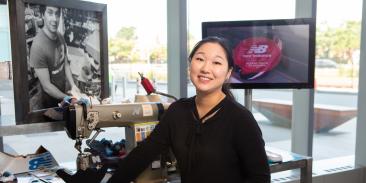EPA Formally Proposes Loophole to Allow More Toxic Air Pollution
(Washington, D.C. – June 25, 2019) The U.S. Environmental Protection Agency today formally proposed a rule to create a loophole for toxic pollution – almost a year and a half after it began implementing the legal interpretation in the rule and in spite of a pending court challenge.
“This loophole puts Americans in danger from unacceptably high levels of toxic and cancer-causing pollutants such as benzene,” said EDF Lead Attorney Tomás Carbonell. “EPA started implementing this unlawful rule almost eighteen months ago without any pretense of following legally required procedures – and the very belated release of a formal proposal today does not alter the procedural shortcuts EPA took to create it, or the underlying dangers it poses to our families and communities. We will continue to vigorously oppose this harmful rollback of protections from toxic air pollution.”
EPA’s loophole applies to “maximum achievable control technology,” or MACT, standards for hazardous air pollutants under the Clean Air Act. These standards generally apply to large industrial facilities, like refineries and chemical plants, that emit high amounts of 187 dangerous or cancer-causing pollutants.
Until January 2018, those “major source” facilities had to comply with the MACT standards for as long as they operated. Then, former EPA Administrator Scott Pruitt created a loophole – in a four-page memo issued, contrary to law, without notice or public comment and without considering the damage to Americans’ health and the environment. The loophole allows facilities to opt out of the MACT standards if their pollution levels drop below major source thresholds.
Under the loophole, many large industrial facilities across the country would be eligible to operate with weaker, or no, air pollution controls. An EDF report found at least 18 major facilities in the Houston area alone that are potentially eligible to use the loophole.
Environmental Defense Fund (EDF) and a coalition of environmental, environmental justice, and public health organizations filed a lawsuit to close the loophole for toxic air pollution. The U.S. Court of Appeals for the D.C. Circuit heard oral argument in the case in April.
Under the Clean Air Act, EPA must formally propose a rule, accept and consider public comment on it, and then finalize it. EPA announced today that it will accept public comment for 60 days after the proposal is published in the Federal Register – but it is still enforcing the loophole now, before the comment period even begins.
With more than 3 million members, Environmental Defense Fund creates transformational solutions to the most serious environmental problems. To do so, EDF links science, economics, law, and innovative private-sector partnerships to turn solutions into action. edf.org
Media Contact
Latest press releases
-
Trump’s EPA Abandons Defense of National Soot Standard That Saves Lives
November 25, 2025 -
New Jersey Settlement: Protecting Residents and Their Environment
November 24, 2025 -
Report: Clean Energy Manufacturing Investments Dropped $3.4 Billion Last Month
November 20, 2025 -
IL Regulators Slash Nicor, Ameren Rate Hikes
November 19, 2025 -
Trump Administration Illegally Extends Michigan Coal Plant a Third Time, Despite Staggering Financial Losses and Breakdowns
November 19, 2025 -
New Report Shows How States Can Fund Home Buyouts as Federal Resources Shrink
November 18, 2025










